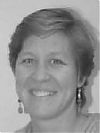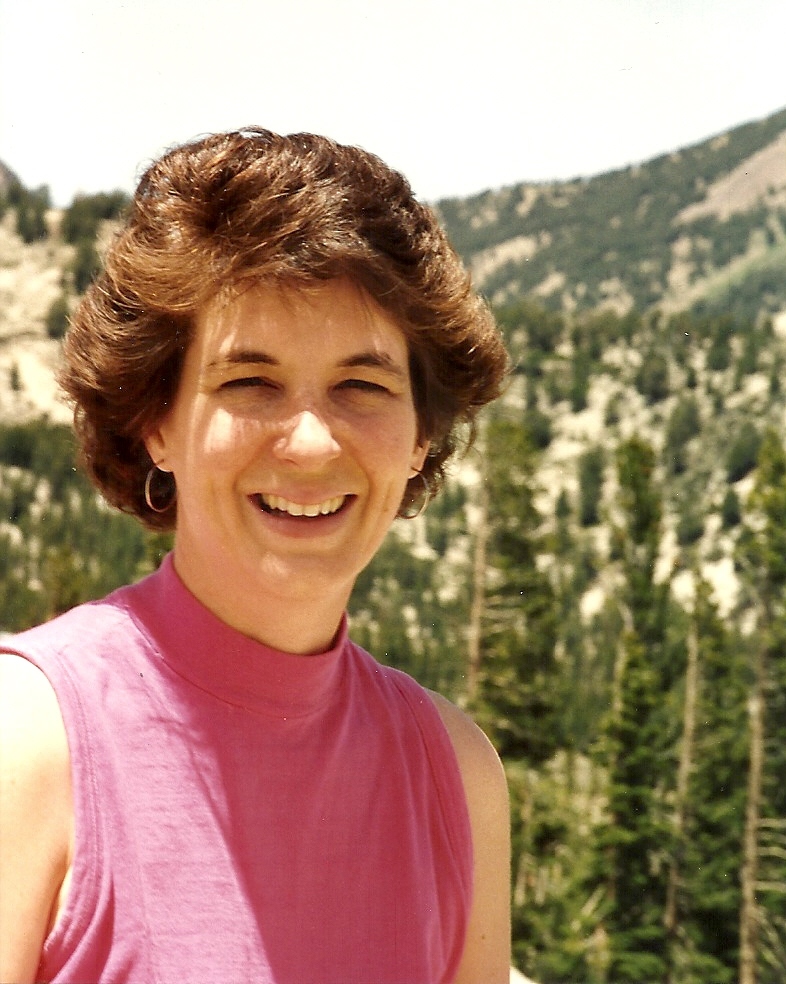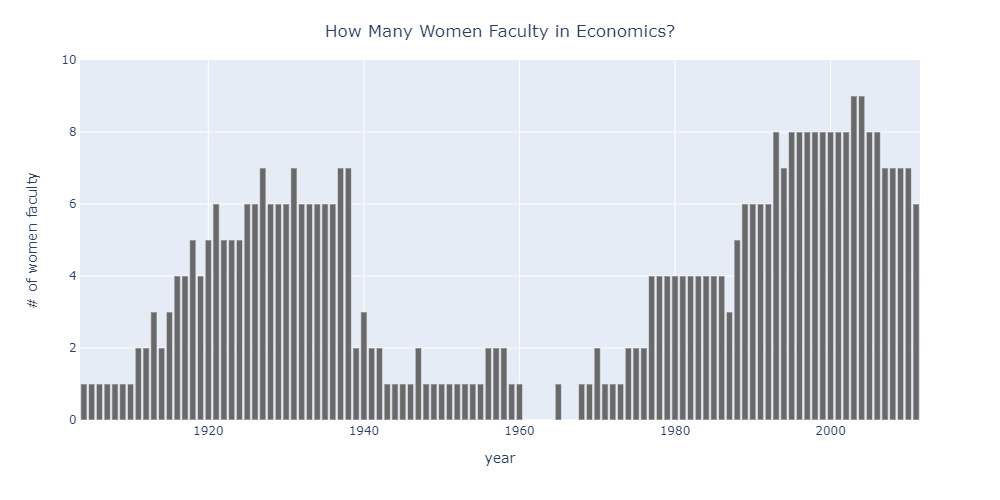
History of Women Faculty in Economics
In celebration of the 150th anniversary of women being admitted to U.C. Berkeley "on equal terms in all respects with young men," we offer this history of women faculty in the Economics Department.
The Economics Department at U.C. Berkeley was founded in 1903. In its second year, two women were hired: Jessica Peixotto and Lucy Sprague. Professor Peixotto was hired first as a "lecturer in sociology" and then as an Assistant Professor, Associate Professor, and Professor of Social Economics. Dr. Peixotto was the first woman on the Berkeley faculty to be awarded the rank of full professor. Lucy Sprague served only one year in the Economics department as a "reader in economics" before becoming the Dean of Women and a lecturer in the English department.
Jessica Peixotto was the first but not the only woman faculty member in the department. In the early 20th century, several other women were hired by the Economics department as faculty: Lucy Stebbins, Lillian Matthews, Lucile Eaves, Louise Morrow, Clara Mortenson, Caroline Schleef, Barbara Grimes Armstrong, Emily Huntington, and others. With the notable exception of Professor Huntington, however, all these women were faculty of "Social Economics." Indeed by the mid-1930s, 5 of the 29 faculty listed in the course catalog were women.
In 1939 the Department of Social Welfare was created, and the women who had been teaching courses such as "The Control of Poverty," "Studies in Standards of Living," "Economics of Consumption," and "Social Insurance" moved from Economics to Social Welfare. By the end of World War II, only 1 woman remained active on the Economics faculty: Emily Huntington. After her retirement in 1961, the department had no women faculty.
The second wave of women in economics begins in 1974 with the hiring of Clair Brown, followed a few years later by Laura Tyson and Joan Hannon. Irma Adelman joins the department as a full professor in 1980, though her primary appointment was in Agricultural and Resource Economics. With the hiring of Alessandra Casella, Bronwyn Hall, and Christina Romer in 1988 and 1989, the modern era was fully underway.
We have assembled here biographical sketches of some of these women. Our first set of interviews with Clair Brown, Joan Hannon, and Laura Tyson form the basis of those articles. We also interviewed the son of Dr. Margaret Gordon who served as a Lecturer in the Economics department in the late 1960s and early 1970s, banned by anti-nepotism laws from taking a faculty appointment in the same department as her husband, Robert Aaron Gordon. Our second set of interviews were with Alessandra Casella, Hilary Hoynes, Martha Olney, and Christina Romer. Our third and final set of interviewees were Bronwyn Hall, Ulrike Malmendier, Emi Nakamura, and Chris Shannon.
This project was directed by Prof. Martha Olney. All the work was done by teams of undergraduate economics majors who served as RAs: Shagufta Ali '22, Lindsay Gyeongjin Earhart '21, Caitlin Hartley '20, Xiaosang Huang '22, Carol Lee '20, Nicole Mashoudy '21, Audrey Oas '21, Jennifer Ramirez '23, Renee Utter '21, Jazz van Horn '21, and Xinyue Yang '23.
|
Jessica Blanche Peixotto Jessica Blanche Peixotto was unquestioningly a trailblazer for women’s education during the late 19th and early 20th centuries. In tandem with a time of rapidly changing societal attitude towards formal women’s education, she was the second woman to receive a Ph.D. and the first woman to hold a full-time faculty appointment at the University of California. Unwavering in her devotion to social justice and her education, she was aptly portrayed in the citation of her honorary Doctor of Laws degree in 1936: “Chosen counselor of the State in matters concerning the protection of children and the care of the unfortunate; social economist marshaling stubborn facts in the service of mankind; comrade among students, inspiring teacher, true lover of humanity.” This is her story. Read more . . . |
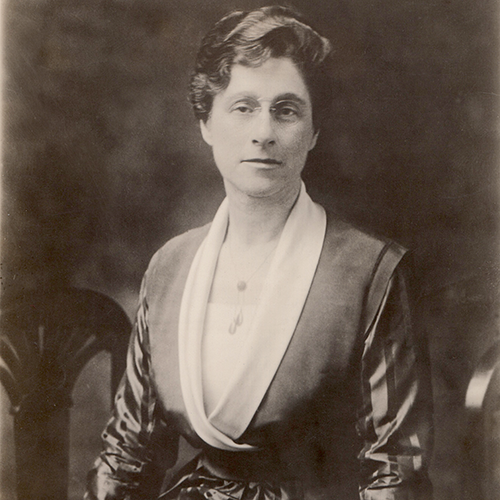 |
| Lucy Ward Stebbins Years active: 1911-1940 |
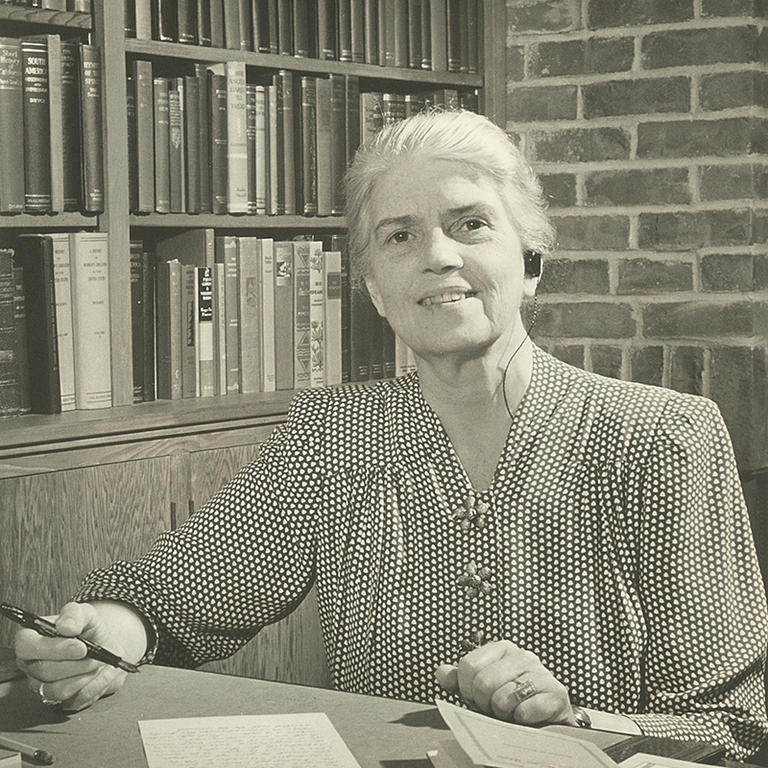 |
| Barbara Grimes Armstrong Years active: 1919-1927 |
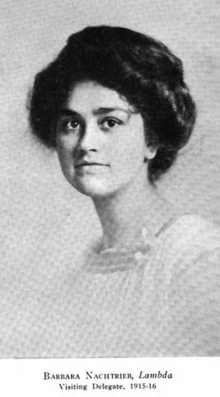 |
|
Margaret Shaughnessy Gordon The history of women in the Department of Economics is complicated and it remains unclear whether Margaret Gordon preferred or pursued greater opportunities within the department. In the same field as her husband, Robert (Aaron) Gordon, she was ineligible for a ladder-faculty position due to former anti-nepotism rules. She prioritized her role at home when many young academics in her position would be establishing their careers. Highly educated and industrious, she remained active through civic leadership and research roles while juggling full-time responsibilities for her two children. To learn more about her personal qualities, we interviewed her eldest son, Robert (Bob) Gordon, a professor of economics at Northwestern University. . . She took the anti-nepotism fate that had cast her into this supporting role as a fait accompli. And she never complained about it and very rarely speculated. Read more . . . |
 |
|
Clair Brown Clair Brown was the first woman to be hired for a tenure track faculty position at the Berkeley Economics Department, since the beginning of World War II. A native of Florida, Brown completed her Ph.D. in economics with a focus on Labor Economics at the University of Maryland. She joined the Berkeley economics department in January 1974. Brown was not just witness to but was also instrumental in increasing women’s presence in Berkeley’s Economics Department. A math major at Wellesley, Clair wanted to help make the world a better place. It was the 1960s and change was at the forefront of most college students’ minds. Ultimately, Clair realized there wasn’t much social reform to be done with mathematical proofs. Read more . . . |
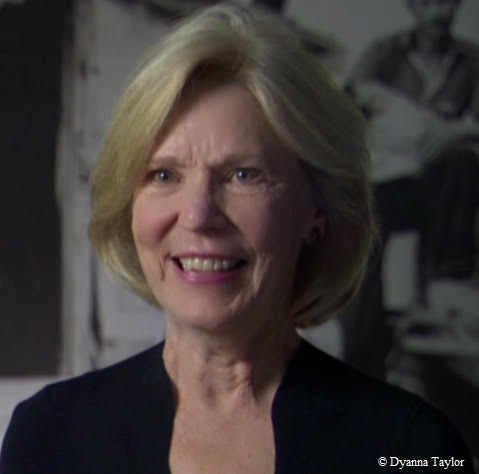 |
|
Joan Underhill Hannon Joan Underhill Hannon joined the Berkeley Economics department in 1977, upon completion of her Ph.D. at the University of Wisconsin-Madison. Raised in Long Beach, CA and a graduate of UC Santa Cruz, Hannon is an economic historian whose research focuses on 19th century U.S. immigration and poverty. At Berkeley, Hannon taught graduate and undergraduate courses in economic history. Hannon was denied tenure in 1985. She subsequently moved to and was tenured at St. Mary’s College of California in nearby Moraga, from where she retired in the 2010s. Hannon’s experience and ultimate departure from Berkeley is an important part of the fabric of women faculty’s experience. Hannon’s politics and intellectual lens always put her more in what is now termed the “heterodox” camp of economics, and what was in the 1970s and 1980s termed the “Marxist” or “leftist” camp. Read more . . . |
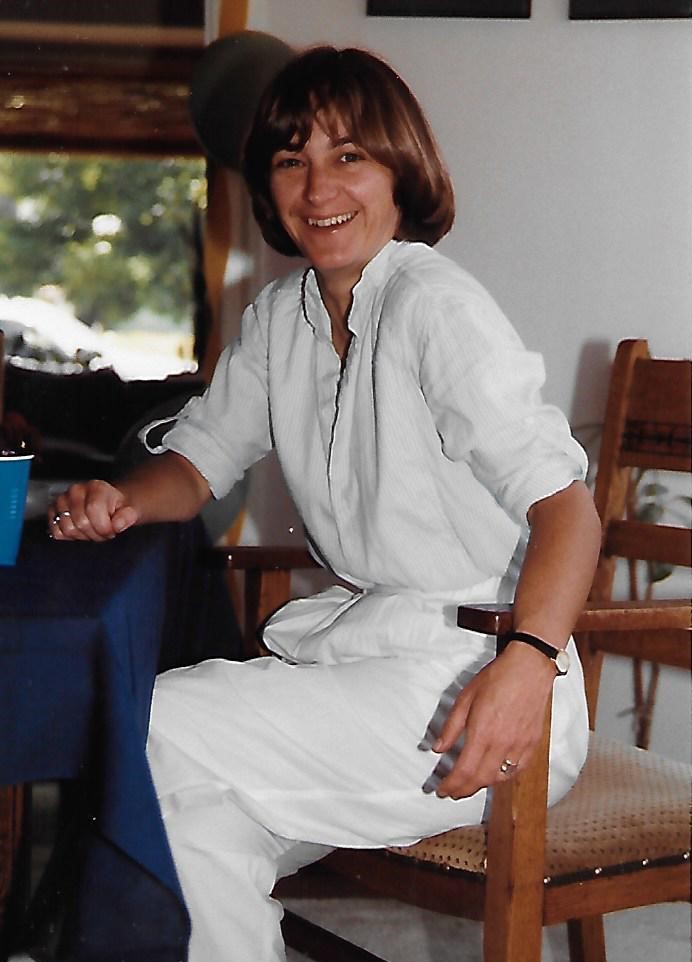 |
|
Laura D'Andrea Tyson Professor Tyson was born in Bayonne, New Jersey in 1947. Growing up during a period of rising economic prosperity, a growing middle class, emerging civil rights and gender equality movements, and cold war geopolitical conflict, Tyson found herself drawn to public policy. Her father received his college education through the GI Bill, and she grew up in a home where college education was highly valued as the foundation of a middle class life. Tyson attended a small co-ed Catholic high school, where Catholic ‘do good’ ideals aligned with the potential for positive impact through policy. Here, she also discovered her talent for math. She was encouraged by consistent support from her teachers who were mostly nuns, including a tough-minded, demanding math teacher – a contrast to the ‘girls aren’t good at math’ narrative that persists in high school classrooms today. Read more . . . |
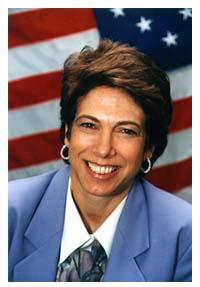 |
|
Years active: 1987-1993 Born and raised in Milano, Italy, Alessandra Casella’s academic journey in the United States started in 1982 when, as a junior at Bocconi University, she spent one semester as an exchange student at NYU. Casella instantly fell in love with New York. The freedom and diversity of New York were liberating. Casella’s intellectual curiosity was heavily influenced by her family, the majority of whom had been academics for several generations. That, and a healthy dose of sibling competition, led her to pursue a Ph.D. at MIT after receiving her bachelor’s degree from Bocconi University summa cum laude in Economics and Social Sciences in 1983. Read more . . . |
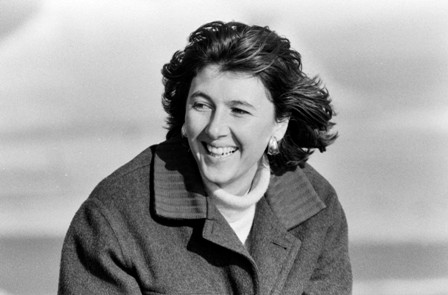 |
|
Years Active: 1987 - present Growing up in the 1950s and early 1960s, Bronwyn Hall and her two sisters were positively influenced by their supportive father and the family’s appreciation for music and classics. While exploring her interests in classical music, languages, especially Latin, in high school, Hall was also captivated by the integration of applied math within the world of physics. Hall was an outstanding high school student and was invited by many colleges to apply. Princeton University – then an all-male school – invited her because they thought “Bronwyn” was a boy’s name. Read more . . . |
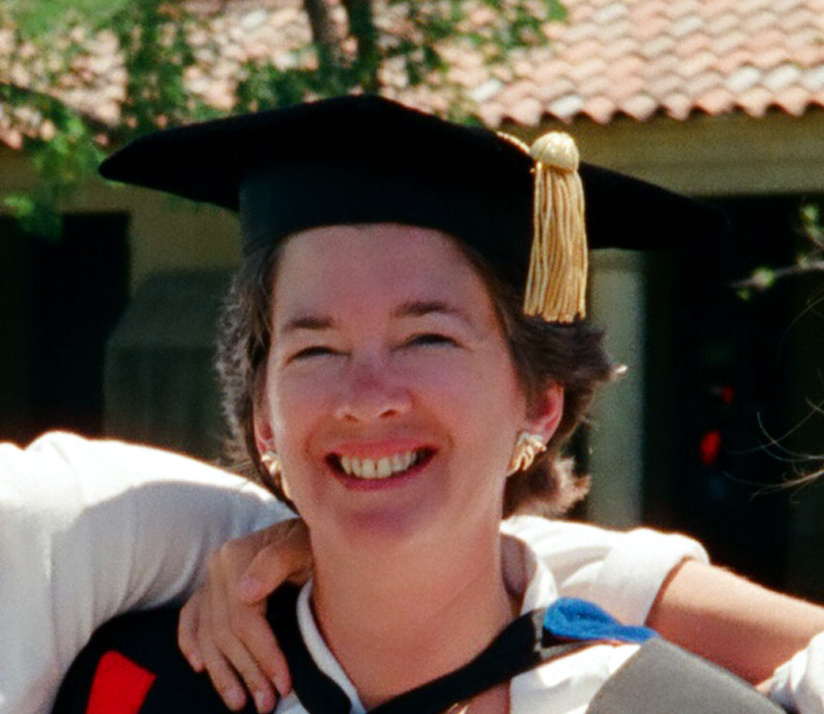 |
|
Years active: 1988 - present
Growing up, Christina Romer found a natural interest in public policy questions. With a grandfather who was a newspaper editor and a mother who listened to the news all the time, Romer’s formative years were surrounded by discussions on topics such as the 1970s gasoline shortages, inflation, and high unemployment.
Romer entered The College of William and Mary for her undergraduate career in 1977 believing that she was going to study political science and become a lawyer. Upon taking a required year of economics classes, Romer decided to switch majors to economics. Read more . . .
|
|
|
Years active: 1992-2000, 2013-present Had she been born 70 years earlier, Hilary Hoynes would have been Jessica Peixotto’s ideal colleague. Hoynes’s research agenda mirrors that of Peixotto, with work in poverty, inequality, food and nutrition programs, and the impacts of government tax and transfer programs on low income families. But where the women in the Economics Department who studied these topics in the 1920s and 1930s were relocated to the new School of Social Work in 1939, by 2013 Hoynes had found a permanent home in the Economics Department and the Goldman School of Public Policy where she serves as the Haas Distinguished Chair in Economic Disparities. Read more . . . |
|
|
Years Active: 1992 - present Martha Olney was born in Oakland, CA and grew up in the Bay Area. She very much stumbled into studying economics. It was 1975, the beginning of her sophomore year at the University of Redlands. Class registration was in the sweltering hot gym, with tables lined up around the edges in alphabetical order. The English department did not have the class Olney needed, and so another option was needed. I backed into the middle of the room. [The tables were] English, then Engineering, and then Economics. I didn’t want to take engineering. There was no line at the economics table. So I went to the economics table and because it was 106 degrees, I was inside a gym, it was hotter than spit, and there was no air conditioning, I said “Do you have anything that’s a Tuesday/Thursday morning class?” They had something called Intro to Micro. I said “Good, I’ll take it” and signed up. That’s it. That’s how well thought out this was. Read more . . .
|
|
|
Years Active: 2018 - present Emi Nakamura comes from a family of economists. She is the granddaughter of economist Guy Orcutt, and daughter of economists Masao Nakamura and Alice Orcutt Nakamura. Her aunt Harriet Duleep is also an economist. Nevertheless, Nakamura’s earliest memories of her parents’ advice about research come from science rather than economics. The Race for the Double Helix, the 1987 true-story film about the pursuits of scientists Jim Watson and Francis Crick to uncover the structure of DNA, held an important lesson for Nakamura that was emphasized by her family: There's a quote from the movie which is that ‘there's nothing worse than a wrong fact’ and the relevance of this quote is that before [Rosalind Franklin]’s pictures [of DNA], people were trying to develop theories that were not actually correct. Her pictures got people on the right track in terms of aiming them at the right target. Read more . . . |
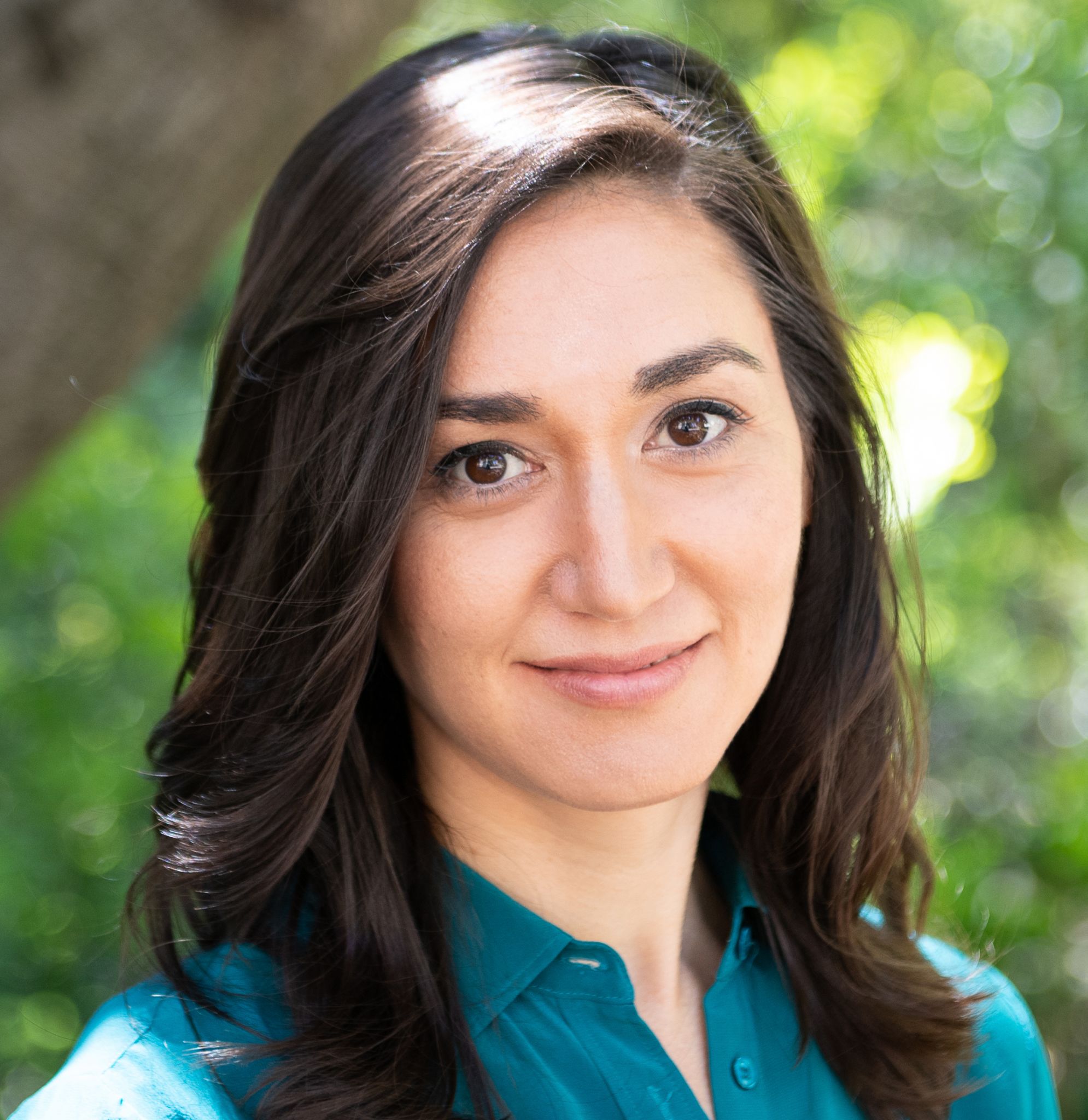 |
originally posted 9/24/2020
updated 4/19/2021, 6/6/2021, 6/14/2021, 6/15/2021, 6/18/2021, 3/17/2022
Author: Martha Olney (olney@berkeley.edu)




